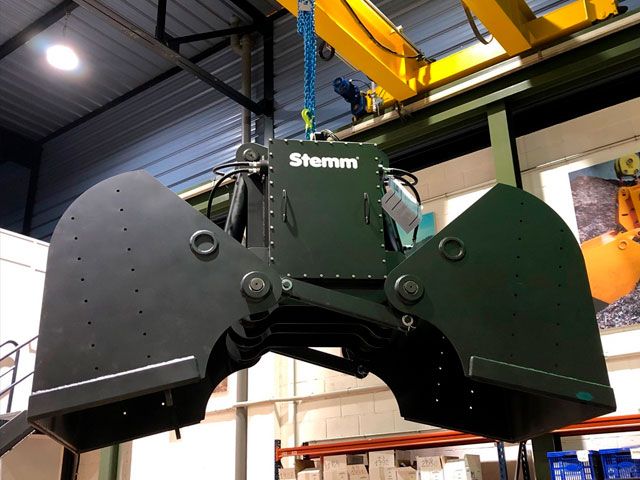The essential role of amphibious clamshell buckets in WWTPs
Wastewater treatment plants (WWTPs) are facilities responsible for reducing water pollution to acceptable values for use. They represent an intricate and meticulous engineering within their flow diagram, as their function is not only crucial from an environmental perspective but also complex in terms of operation and management. Within this system is the coarse well, a decisive stage in the purification process, as it is the point at which the influent is treated to achieve, through disinfection, the influent water. At this point, the amphibious clamshell buckets play a leading role.
The coarse well and its four challenges to consider
Far from being merely an initial filter, the Coarse Well aims to remove more extensive materials to protect all components from wear; that is, it faces significant challenges that could affect the efficiency of the entire facility, such as:
- Diversity of materials: Wastewater arriving at a WWTP is not uniform. It contains a wide range of solid materials, from large, easily detectable objects to small particles that can be difficult to filter. Stones, branches, plastics, sand sludge, and scale are just some elements that can reach the coarse shaft and spoil the installation.
- Variable volume: The flow of water and solid material entering the coarse shaft can vary widely, depending on weather conditions, time of day or area of origin. These fluctuations demand flexible solutions that can adapt quickly to different volumes of material.
- The need for rapid removal: It is essential to quickly and effectively remove materials from the bulk well to avoid blockages and ensure adequate flow in subsequent stages.
- The environmental impact: Improper management can release pollutants into the environment or damage the WWTP infrastructure.
Amphibious clamshell buckets for WWTP stations
A clamshell grab will be the right solution for adapting to different conditions, such as sand pits, settling or sedimentation tanks, stabilization ponds or storage of liquid or pasty sludge. The lower the space density, the greater the importance of the seal, and specialized tools, such as Stemm amphibious grabs, are required.
The tight timing of the valves ensures efficient extraction, while the ripped holes allow the materials to dehydrate properly. One or two reinforced hydraulic cylinders allow the necessary movement of the shells. In addition, the lips of these scoops are reinforced with anti-wear material to ensure durability.
Two amphibious buckets are available:
According to the technical requirements of valves, density, cubage and weight, Stemm has these two types of grabs available with their respective technical requirements:
How to select a clamshell grab for WWTP
In the industrial field of water treatment, the tools and equipment used significantly affect the efficiency and effectiveness of the process. With their precision, durability and adaptability, Stemm clamshell grabs are an essential choice for WWTPs looking to optimize their process and ensure environmental safety.






